Virtual Reality
Google Earth Tours, https://earth.google.com/web/@47.38636818,0.68519617,52.26344a,28822.82001172d,35y,38.57565035h,0t,0r/data=CkcaRRI_CiQweDQ3ZmNkNWIzNGE5NzlhNTU6MHg0MGRjOGQ3MDUzODg0MzAZ5P35_nOyR0Ahj9iJndjp5T8qBVRvdXJzGAIgAQ, is a great virtual reality resource that can be used in almost any classroom. You can explore all different parts of the world and when you are on the website, it looks like you are actually there. If you click on the location, it searches the web for all of the information about that specific place. It can be a great tool for students who want to gain more knowledge on different places around the globe. If you are learning about a place in one of your classes, you can use google earth tours to pull it up and show your students. You can get the 360 degree view of the place that you are searching and it can be really helpful if you are researching that location.

In all, I think that google earth tours is a great resource for teachers to use in the classroom and can be really helpful in researching different places around the world.
Julie Barron
blog post Eden Walk
In my walk out of Eden journeys, there were a lot to be taken in, so many different landforms, people, objects, and feelings to be had. On my first adventure, I did the silk road chapter 4. This one truly spoke out to me considering the length of travel the journey was, along with all the different scenery. Ranging from the cargo ships to the Deseret and everything in between. Along the way, there was lots of history that were passed such as in the tomb that was passed where the rock/clay was carved into by a horseman. During the travel, the people that were seen were truly remarkable such as the Afgan cobbler that made pauls packhorse a harness. In the Airakty mountains, Kazakhstan they got to harvest steppe (milk protein) from camels. In Uzbekistan, there was a 300 dollar mastiff for sale at a roadside market. But strangely enough during the journey, the point of not seeing women were trending up until mile 4300. The silk road is seriously one of the most interesting and complex pathways for centuries.
On my next journey The Riverlands, the first stop was northern Pakistan where they watched families follow the rivers in the glacial valets of Karakoram, follow the water in order to find pockets of gold from the river bed, children, women, and families try to get as much as they can in order to live. A good day for them is a tiny nugget that is worth $40. Sadly the next stop I made was in Punjab, India, where my eyes were opened to the use of drug abuse by teens to numb the pain of everyday living. Most people want to escape their living situation and find something better due to such poor lifestyles and conditions. The next stop is Gwalior India, where the crime rate is so high the police put up wanted signs and will pay for weddings or medical bills if bandits are brought to justice. It is deeply saddening to see so much poverty and rough life in our world.
Lastly, Chapter 6/ Middle kingdoms, takes place is china focusing on all the history. My first stop was the Gaoligong Mountains, taking place near an old silk road trading town. These mountains are crammed with over 700 animal species, ranging from mammals to amphibians and everything in between. The rain that occurred would practically flood our cities, monsoon rains are an understatement. The landscape throughout this part of the journey did not vary much, very desolate, valleys and mountains. This piggybacks the fact of low populations, but insane amounts of animal life. The people they did see were definitely were interesting, for example, Yang a 74-year-old man who is a herbalist and hand rolls his own products. It truly is remarkable how other people live in such different scenarios than we occur in the US every day.
Out of Eden Walk
This week I was asked to explore National Geographic; this is about the site: Out of Eden Walk; this is the website if you like to view the information I will be writing. The pictures you see in this presentation are just a few places Paul has traveled to, but you can find many more places on this website. Within this site, you have options for viewing, and they are by chapter, location, language, and category, but I will stay with the option Chapter.
https://www.nationalgeographic.org/projects/out-of-eden-walk/#section-0

Paul Salopek is a journalist who has traveled the world and would like to take us on his adventure, named Out of Eden. The travel took ten years to complete, and he traveled 24,000 steps. In Chapter 1, he talks about leaving Africa.
Chapter 1 Milestone 1: Herto Bouri, Elevation 1809 feet
His walk started on January 22, 2013, at Herto Bouri in Ethiopia. His starting plan was to travel the areas of the world where people had fled too. He travels a distance of 24,000 steps and seven years. This travel will end in the year 2020. The people who walked away were hunters and gatherers. They had found fossils and DNA to date the trackback many years ago; specific timing was about 50,000-70,000 years ago. He had planned his path to get to his final destination, including some obstacles he would face, which you can see above.
Before this journey, he flew to his final destination and met with a lady named Cristina Calderón, 84. Knowing she was an older lady and the last person who spoke, Hagan Paul flew to talk to her and hoped he would see her once again at the end of his travel. He looked to her words to carry him through his travels. She happens to be the last full-blood Yaghan speaker.

The next Chapter ad story to review is Chapter 2, The Holy Lands, Walking Jerusalem.
May of 2013 to July of 2014
You enter through om a Bridge of Strings to the great city of Jerusalem. To the residents of Jerusalem, their land is a source of confusion. They have from the least like parts to the most likable parts. The residents from there and the present people there are connected. The movements that he made were significant in this chapter. He traveled downhill to the Valley of the Cross, then went through the Holy Cross Monastery to the spot where the tree they used for the crucifixion grew. Paul continues on his travels because there is still nobody there.
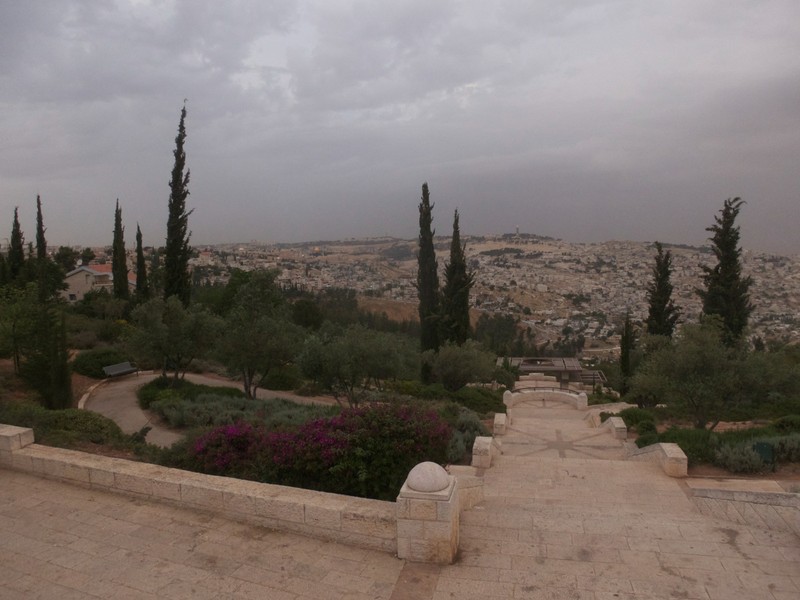
Abraham’s first view of Jerusalem May 7, 2007 View of the Promenade
He leaves the area and proceeds to walk to the Mount of Olives. At the Mount of Olives, there is a place, Pater Noster Church which includes Braille in translation. The Orthodox play games late at night, specifically Backgammon. Towards the end of this section, you see and hear about the cemeteries being destroyed or preserved. We hear of a battle with Palestine about Mount of Olives. To this day, people still travel by camel. Mary’s tomb below is under the hanging lights underground.
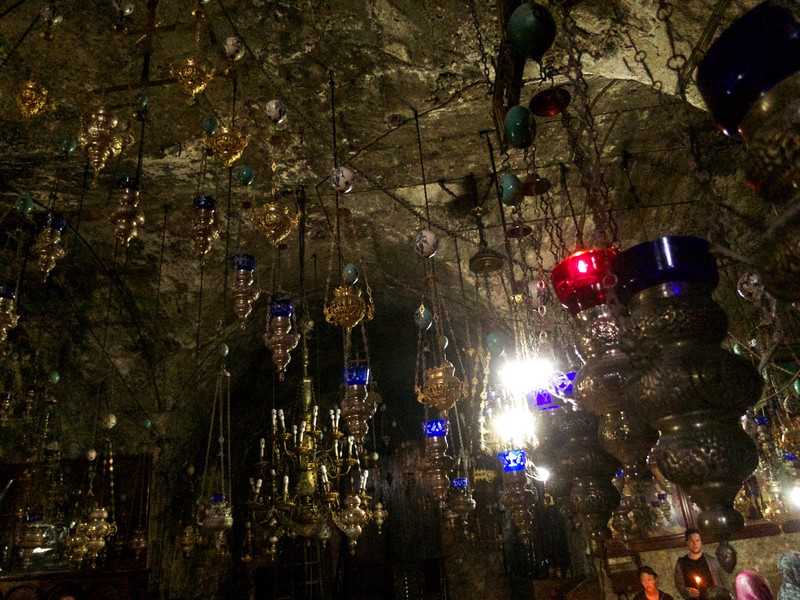
Chapter 5 Goodbye to Myanmar May 27, 2021 Editors Pick
We cannot escape grief.
Before leaving Myanmar, he said goodbye to the people with who he stayed. He found these people to be very educated. They were training themselves to resist the government; their training went from bows and arrows to self-defense. Paul realized he had been on the trail of the people who invented bows and arrows. He goes on to explain not only did he follow the creation of bows and arrows, but he has also walked through war, was ambushed by gorillas in Turkey, and when going through Afghanistan, was delayed due to the Taliban.
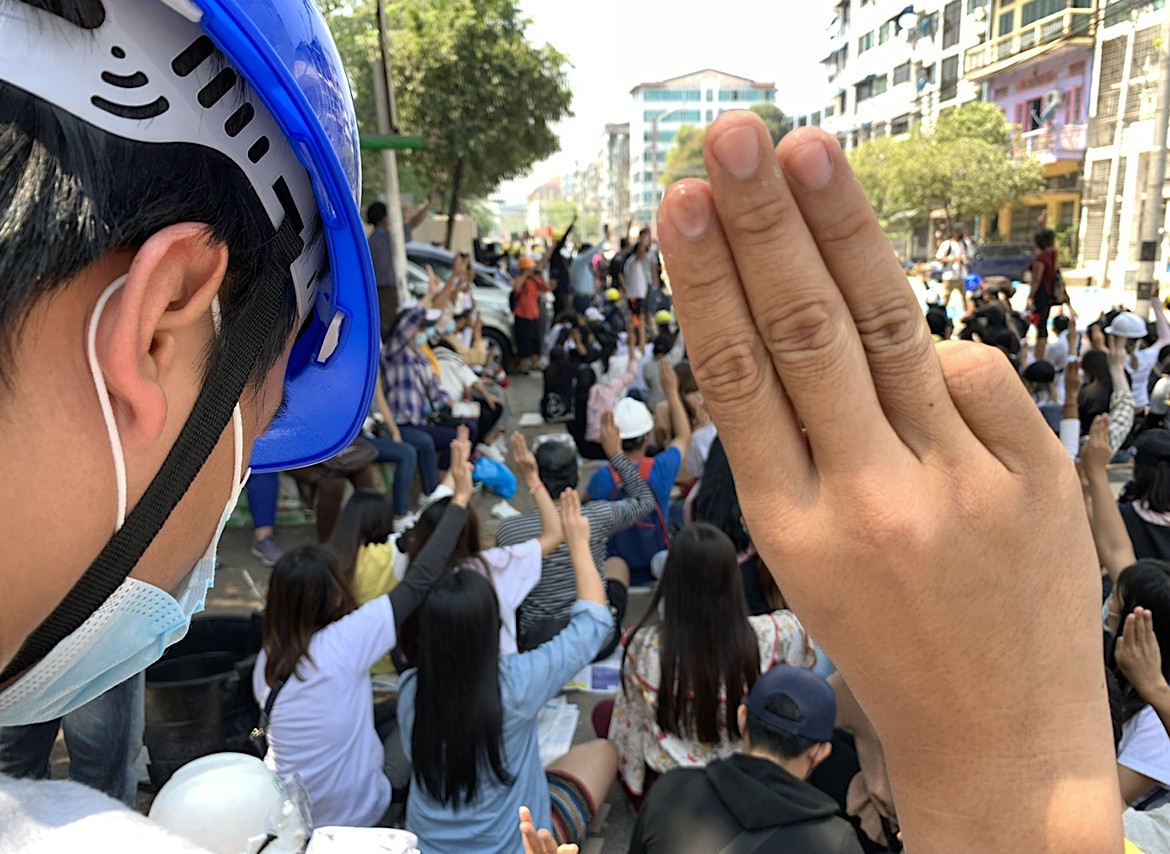
The forces in Myanmar have killed more than 800 people, including children. Journalists needed assistance as they were in jail, where executions took place; he decided it was best to leave Myanmar and track until he got to the Burmese capital. At this point, he reached 11,000 miles. In China, you can easily walk away, but the grief stays with you. With this, he had to worry for the people that he met there. The people patrolled the streets while this was happening; people talked very low about their desire to leave.
I chose these three stories as they left an impression on my thoughts. Paul went a long way to reach his goal, and he has completed his mission. He is gaining a wealth of knowledge and understanding. As Paul traveled, he knew that he wanted to see the lady again as she was older and had a feeling that may not happen. His travels took him through religious cities where he had respect for the people there; he shined some light into what was necessary to know and finally made his way to the goal he established for himself. Paul tells us the travel could be dangerous. At one point, he needed to take a plane even though he wanted to travel solely by foot. He allows us to feel, hear, and see what his journey has captured. We understand the Holy Land, but that is not from a first-person perspective. He goes into a more excellent knowledge of the areas he traveled to, which makes me very appreciative of his work.
The Path of Us
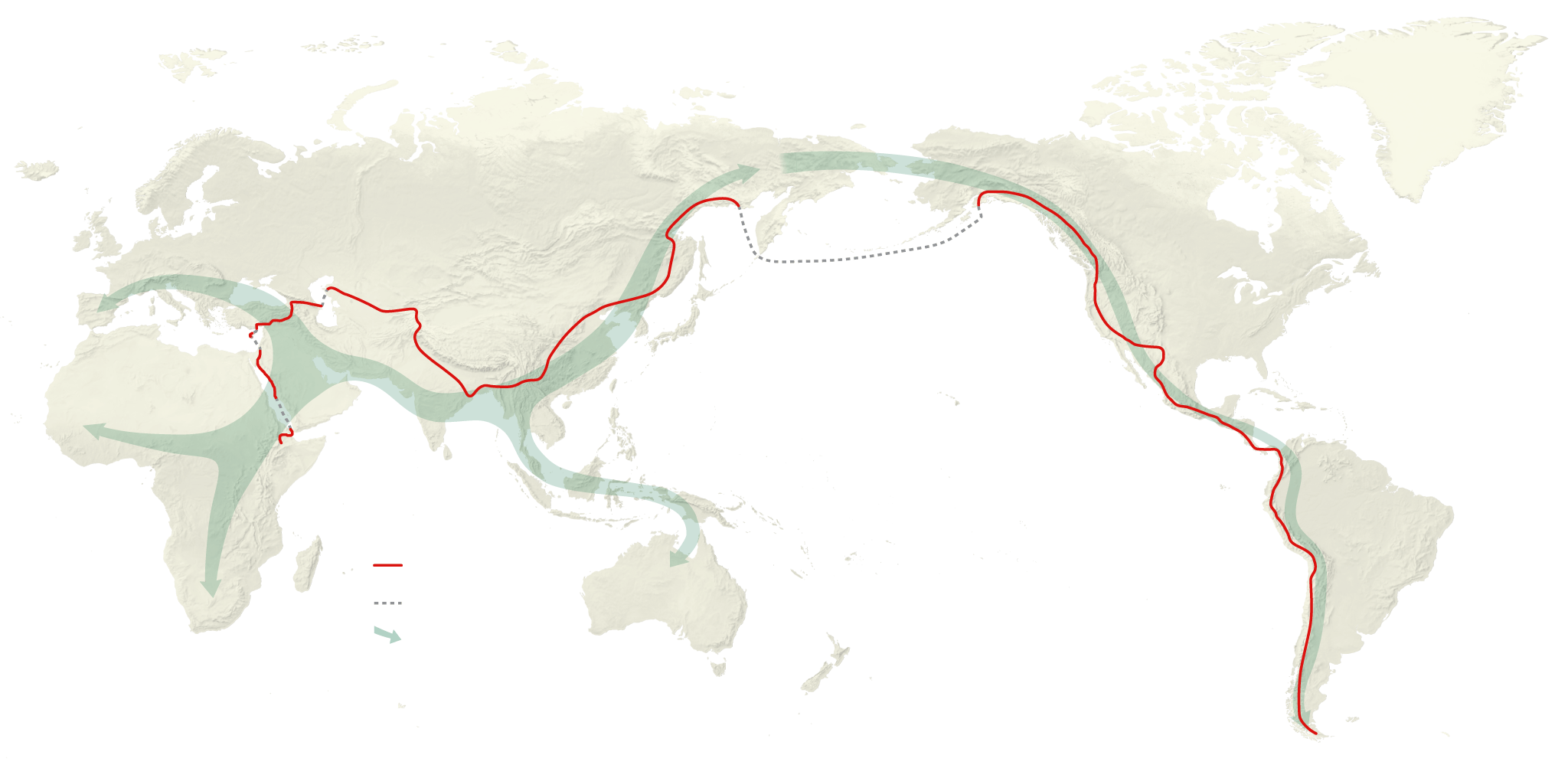
This week focuses on the Paul Salopek and his Out of Eden Walk where he is documenting the journey that our ancestors have taken to across the globe. This project started in 2013, beginning in Herto Bouri, Ethopia and eventually ending near Cape Horn in South America.
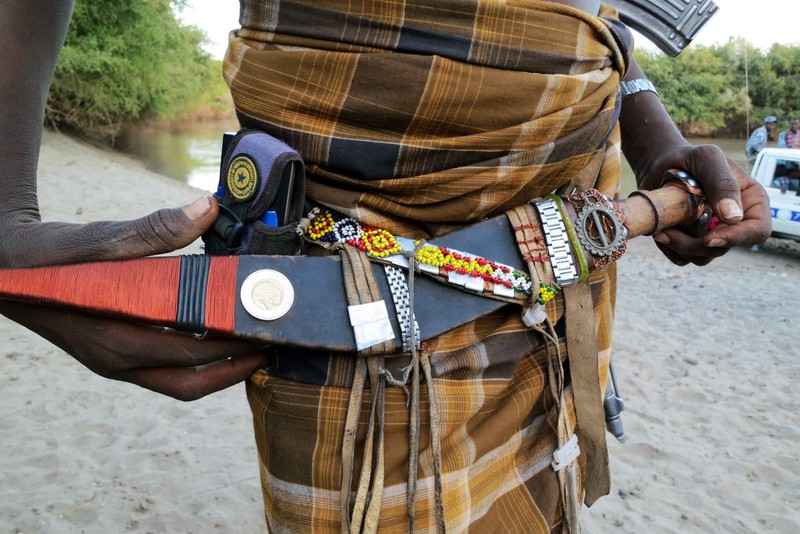
I started out by looking at Paul’s start in Ethiopia. Milestone 1 is in Herto Bouri, a place where there is not a whole lot. Here Paul speaks with Idoli Mohamed who is an Afar (a group of people that live in the region). He is a pastoralist who wants his children to go and study in order to make their lives better then his own. Idoli says this land has two main problems, a bush called Wayne that blocks the sun for the fields and that animals do not eat. The second problem being the lack of water. Idoli hopes with education they could move to anywhere else but there.
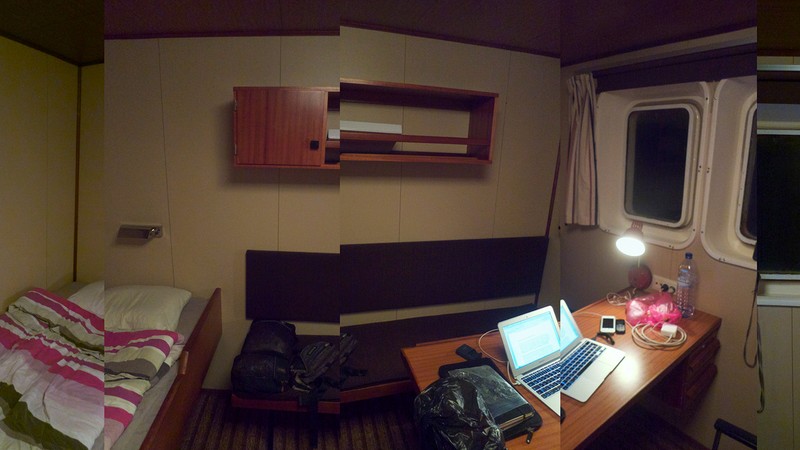
The next point I wanted to cover is in the middle of where Paul Started and currently is. While Milestone 20 is not the geographic center, it is the beginning of Chapter 3 and Paul is currently working on Chapter 6. In this section Paul is aboard the cargo carrier MV ALIOS in the Mediterranean Sea. He is going to the island of Cyprus from Israel.
While Paul did not get the chance to speak with anyone on the vessel, he was able to get some sense of what it was like to travel aboard a cramped ship. Ancestors most likely traveled in much smaller boats, like canoes, to get to Cyprus. But in ore recent history people have crammed into cargo ships in order to travel and move about the modern world.
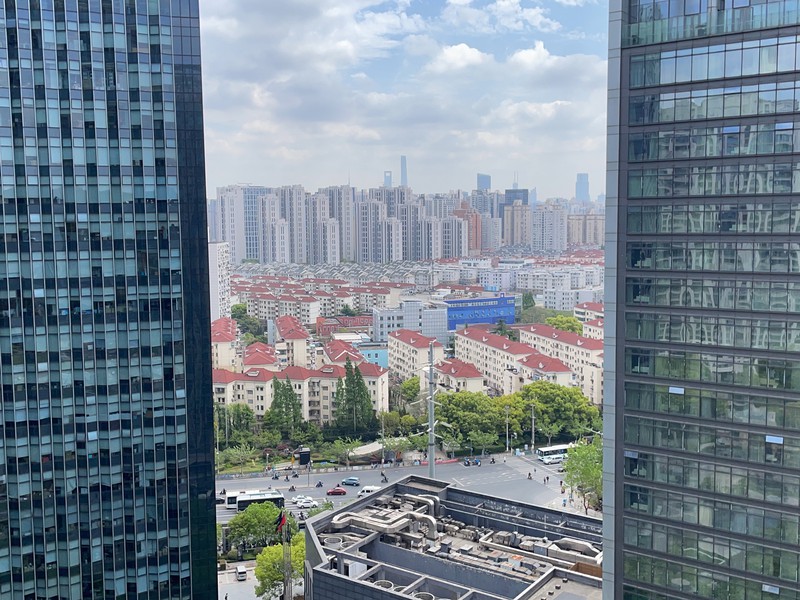
Milestone 74 is the newest entry into Paul’s epic journey. This one coumes out of Yusan in China. Due to the pandemic his travel was suspended in Myanmar, and after a coup there he had to leap frog by plane in order to travel into China after the borders opened up again.
Here Paul spoke with Jiang Ji Bing, who grows flower that are used in medicine and fertilizer, But business is bad because the borders were still closed for trade. He plans to only pick the flowers that are remaining and then pack up to go back to Tengchong where he is from. A sober setting for Paul, a painful display of how the pandemic is affecting all jobs that were once able to sustain someone.
Paul will continue his trek, and if you would like to know more then go to National Geographic and read about all of Paul’s astonishing milestones.
Out of Eden: The Original Walk
Humanity is old. Like, really old. Our ancestors have been around for over two hundred thousand years, and truthfully that’s just a small sliver of time compared to Earth’s lifespan. Nevertheless, our creed now spans the globe and reigns over all other species. Of course, that wasn’t always the case. Humanity never fought for it’s top spot in the race for species kingship, but back during the first generation of homo sapiens the Earth was unexplored. National Geographic, in collaboration with Paul Salopek, explored the journey out of Africa, the origin of our people, and into the vast world that took centuries to trek. The trek they took can be explored in minutes with the technology we have today.
I explored three parts of Paul’s current eight year journey. You read that right, current. Paul started his journey in 2013, and through eight years of continuous venturing he’s gone 7500 of the estimated 12,000 miles our ancestors originally walked. I joined Paul in the beginning, and what really struck me was Paul’s outlook on the journey. The man had accepted this journey would be over ten years of his life, but his mind worked in a way that so that explaining the importance of his journey was understandable. Paul started in Africa, of course, more specifically Ethiopia. From the article “Let’s Walk“, we gather Paul’s initial thoughts. His journey will reflect the past, not focusing on his end point of Tierra del Fuego. He restates that to locals who ask him where he’s going. Paul’s focus is always on the next point, not the end. This adds to the accuracy of the journey as our ancestors had no true end point, they search for habitable land. They searched for conditions to live in, for flourishing land and game to hunt.
Of course this journey is nearly impossible now without boat. Continental separation and climate change over nearly two hundred thousand years made this journey sectioned off by bodies of water. The caption of this section was “Silk Road”. The formidable Silk Road was a trade route encapsulated in history as one of the most important marks of development. Paul’s “Silk Road” is no longer accurate to the Silk Road of the past, but Paul’s journey shows the modernize Silk Road. Today we have much quicker means of transporting goods, whether that be by boat, plane, or more local means like car or mail carrier systems. These our the Silk Roads of today.
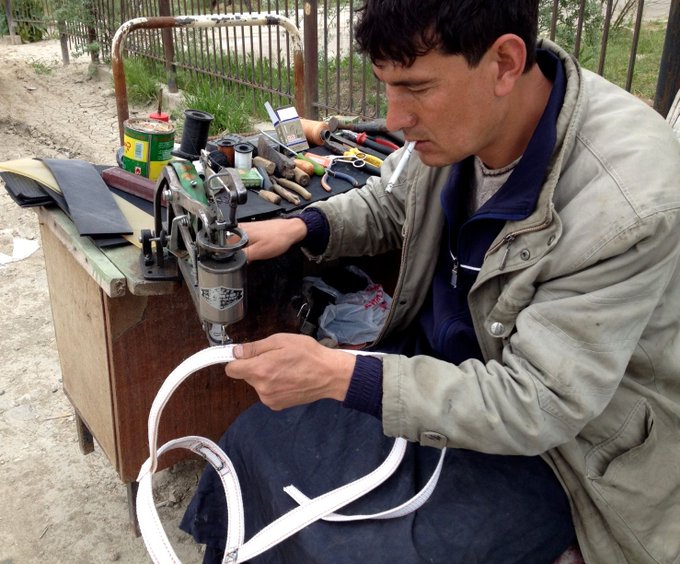
https://twitter.com/PaulSalopek
Paul is nearing Eastern Asia now. The Out of Eden website is updated on his journey as of October 2021. What I have come to love about Paul’s journey is his perspective. Through seven, almost eight years of travel he has not changed his outlook and ability to describe. He has become grounded and more aware. Meeting people from along his journey has shown him different perspectives of the modern world. In his journey is reciprocate the ancestral world he has found nothing but damage. The word’s of the wise seem to go unheard. The article “Green Ark“, also the most recent from Paul, shows how passionate Paul has become along his journey. He began his journey focusing on the next destination, exploring a foot-worn route as old as time. He now sees deeper than we can imagine. He has seen development and unnatural development. In his latest article, he states that along his path in Asia “I spot a dark form flit from the ground into the trees… it is Gallus gallus, the red junglefowl, a wild Asian ancestor of what is by far the most abundant bird on Earth today: the 65 billion commercially bred chickens eaten by humans every year” (Salopek). 65 billion. If that doesn’t show the impact of commercialism and greed then I don’t know what does. If that doesn’t rattle you, then try to fathom the carbon output and pollution effect that product has.
Paul isn’t done his journey yet. You can keep up with him here: https://www.nationalgeographic.org/projects/out-of-eden-walk/
Out of Eden Exploration

I used the Out of Eden National Geographic tool to travel around the world with the help of Paul Salopek. I enjoyed seeing all of the different places and experiencing real life locations with this interactive virtual tool. For this project, I chose to explore an island in Cyprus, a valley in Northern Pakistan, and a town in China.
I learned that Cyprus is one of the oldest islands inhabited by humans on the planet. It has a rich history that is reflected in both the manmade structures and the natural landscapes shown in the article about this particular leg of the journey. I enjoyed reading the detailed, vivid descriptions as well as seeing all of the beautiful locations captured by the photographer. All of the material presented about Cyprus makes me want to learn more about the place on my own.
The second location I visited was Northern Pakistan. The chapter focused on the nomadic miners who pan for gold on the banks of Karakoram. I read about the Sonewal people, who spend their days searching the river for precious flecks of gold. The pictures and paragraphs of information about the miners lives are thought provoking and make me wonder what my life would have been like if I had been born to a different family in a different place.
The final location I read about was Yusan, China. I was particularly interested in this location because I’m adopted from China and I always enjoy learning about my home country whenever I can. I loved seeing all of the beautiful pictures and reading the history of this specific location in China. The landscapes and videos look like they could all be still life paintings and the videos of city life remind of the trips I take to Manhattan every few months.
I would love to show these pictures and videos in my future classroom and explore the art from all of the different places I saw in the Out of Eden project. It would be interesting to assign the Out of Eden project as class reading and then have all of the students tell the class about their favorite places the next day. I think it would be a great way to show the kids about different ways of life around the world.
Start your own journey here: https://www.nationalgeographic.org/projects/out-of-eden-walk/#section-1
Out of Eden & Into the Classroom
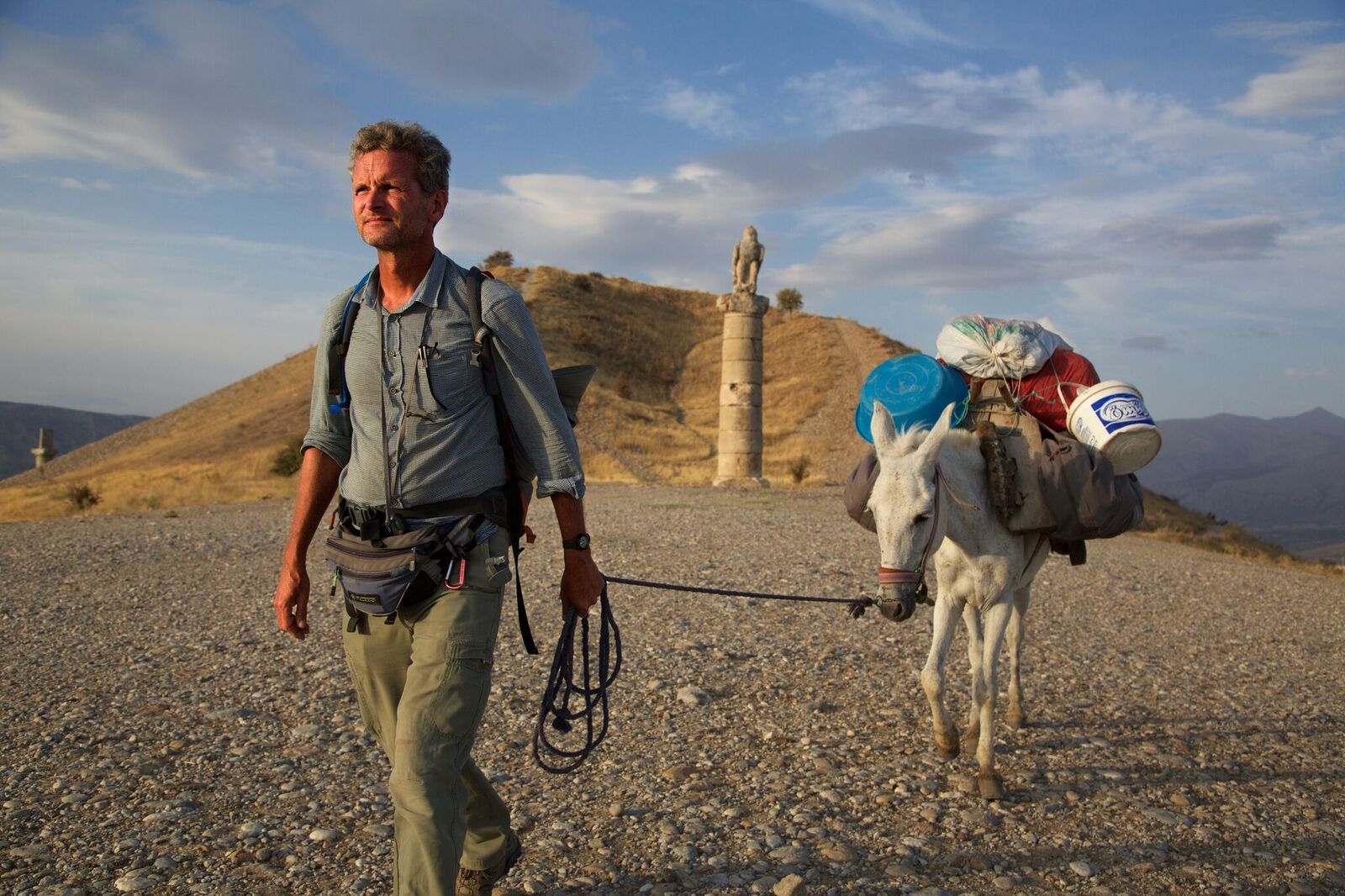
Before visiting this website, I had never heard of the Out of Eden Walk, and I am honestly surprised considering how much of a feat this is. A modern day Odysseus, Paul Salopek is currently on a 24,000-mile odyssey from Africa to the southern tip of South America. It is special because he is following the path our ancestors made as they migrated across the Earth. Along the way he is covering the major stories he encounters from the eyes of the people I didn’t even know existed. From climate change to technological innovation, from mass migration to cultural survival, Salopek is giving voice to the people who inhabit the places he is journeying through every day.
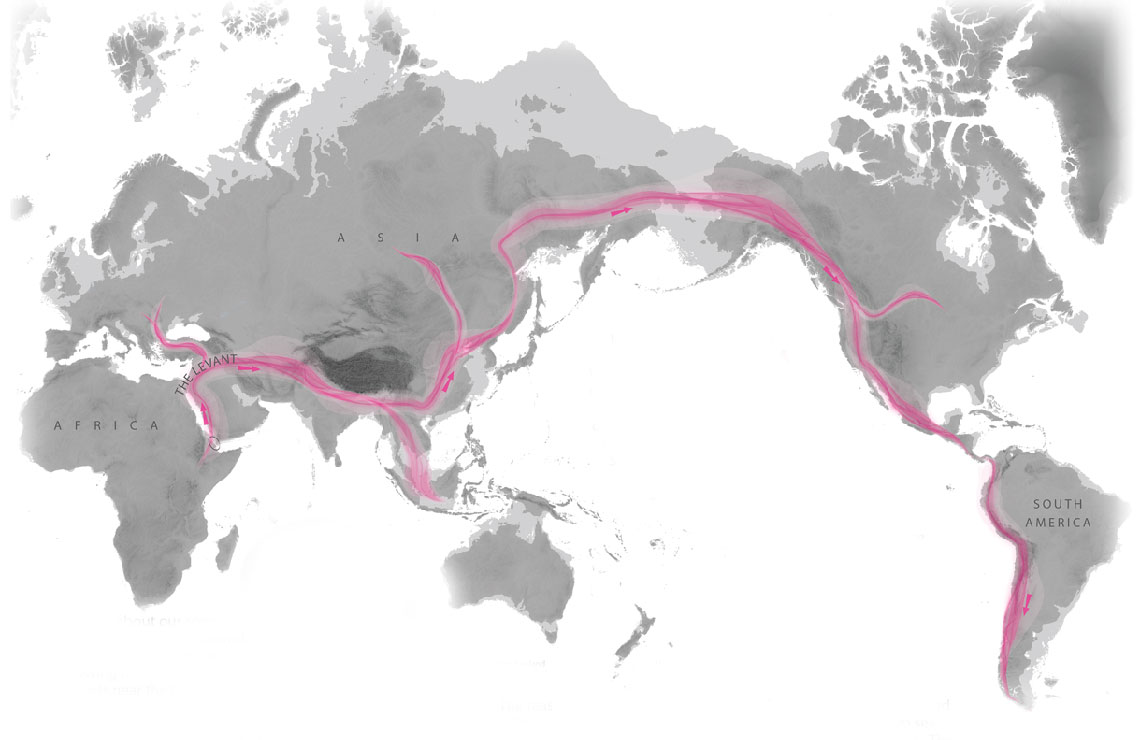
Walking for several years now, Salopek has obviously been to many places. Alongside gaining popularity for this odyssey, he has also inspired educators across the world to teach globally. As a future teacher, I am going to have the task of teaching students about the world ahead of them, and that means more than just learning about their city, state, or even country- it is about teaching that the world is way larger and has so much more to offer than what is on TV or in the news. So much of today’s society is based upon quickness and cheapness, rather than time and quality. Paul Salopek can simply visit big named places in each of the countries he visits and be done in a few months. Instead, he is emphasizing the slowness of it, which really brings meaning to his work and allows for those genuine human interactions. In this blog post, I am going to talk about a few of the place’s Paul has been to.
The first stop for us is the most recent one for Paul: The Gaoligong Mountains, in Yunnan, China.
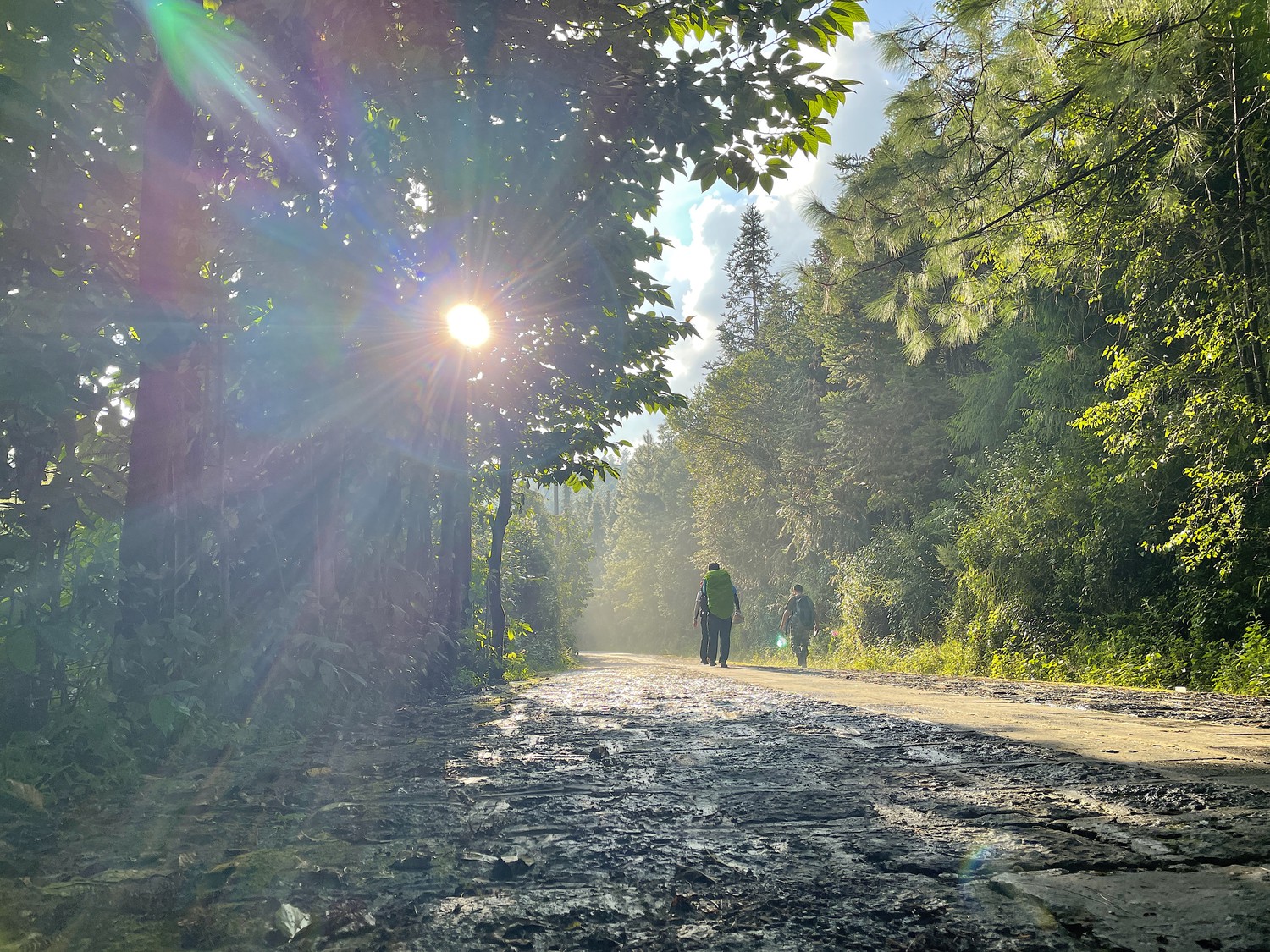
According to Salopek, around 5,000 species of plants, around 700 species of animals, and 1,690 different insects find refuge in the mountain range. One of his guides says the forest floor was so covered with salamanders, the only way he could leave the forest was by walking through creeks. These places are untouched by technology and because of that are often overlooked. That is no problem for those who inhabit areas near the mountain range, in fact, they prefer it. An administrator of the mountain range spoke with Paul and explained there is a saying that goes, “You cut my trees? I cut your hands”. They are very passionate people and have the utmost respect for nature, something that we should all learn from and admire. Yang Xue Liu is a 74 year old man Paul encounters in a village in the mountain range. He sells medicinal herbs and each one has its own purpose. He explains that if people knew plants, they would use them and that is something very important in a science classroom. A teacher could give a whole lesson on plants or nuts that are safe to eat, which can help students learn how to use the environment around them and not always rely on processed food.
The next stop is a step back into time for Paul, but a new future for me and those alike who have no idea a place, named Baku, Azerbaijan, exists.
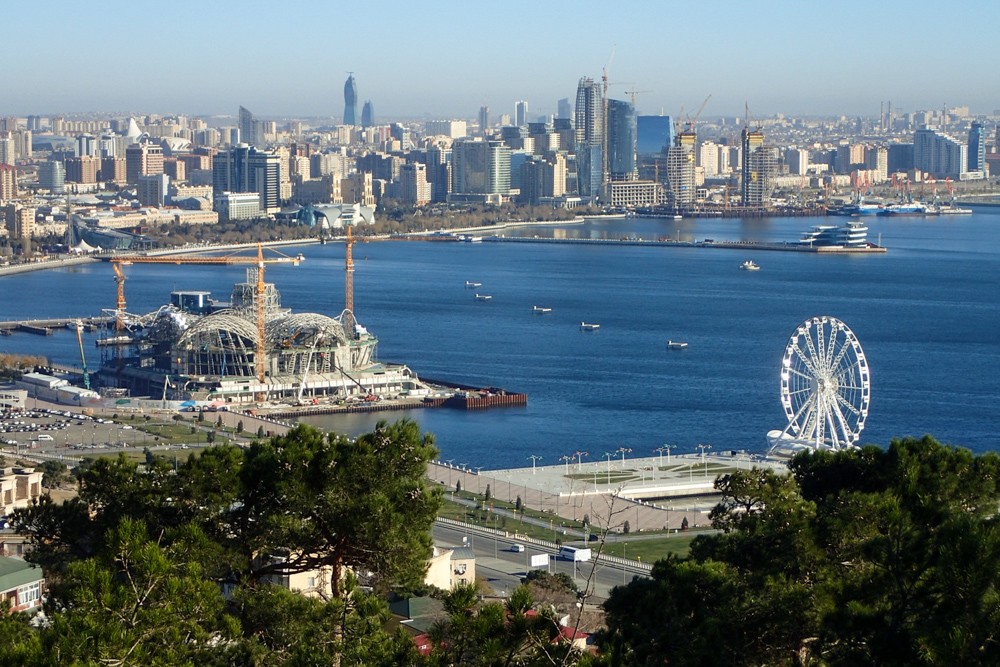
Baku is home to many different empirical influences, from Russian to Persian, Ottoman (Turkish), and even British. It is also home to apparently the world’s largest KFC: a fact I did not ask for, yet did not know I needed to hear. This city has a reputation for taking in widely different influencers and somehow manages to create its own spin on it. This kind of city would be great for a social studies or history class, as it is proof that we live with history everyday. Paul links a walking tour of the city that I think greatly shows the user just how diverse and culturally rich this city is.
Continuing with the theme of being unexpected, the last stop in this blog is where Paul Salopek started, Herto Bouri, Ethiopia. It is interesting to read what expectations he had for his journey, and how excited he was. Salopek in 2013 predicted to be in South America by 2020 and it is crazy to think about how much of the future is unknown especially writing this blog in 2021 dealing with the Covid-19 pandemic. His journey beginning reminds me of beginning school for the first time as a 6 year old. Like Paul, I had no idea of the journey I was in for, and I still do not now. Just as my parents and other adults have done before me, I walked through school everyday, enjoying the ride and discovering new things about myself and others. Now, on the cusp of ending my school career as a student, I begin a new walk in school, as a teacher. Like the guides that help Paul on his journey, I too am now a guide for the students who are now where I once was. Keeping him and his journey in my thoughts, I will use this Walk of Eden as a teaching point about the globe, but also one about ourselves. A quote by a fifth grader in the U.S.A. about the Out of Eden project really sums up the importance of this project: “I think when exposed to the details of others’ lives, you start noticing your own…”—Annie 5th grade student, Massachusetts, USA.
Out of Eden Walk
A Out of Eden Walk is an adventure conducted by Paul Salopek as he embarks on a 24,000 mile journey to show the beauty the earth has to hold to the world’s population.
https://www.nationalgeographic.org/projects/out-of-eden-walk/#section-0
One of the adventures a Walk of Eden Walk went on was a trek through Saudi Arabia, Jordan, West Bank and Israel. This trek through the Middle East took place from May 2013 until July 2014. Their journey started in Jeddah, Saudi Arabia. At this location, they walked over 60 miles and this was the first urban trek in their adventures. This location has seen a spike in population growth, contributing to the 67 billion dollar construction boom within Saudi Arabia. The city is very comparable to Los Angeles in terms of its urbanization and population. The walk was conducted with the help of Sam Nawar who is a historian of Jeddah and Mohamad Banounan who was their desert guide. Their cities, again, were very comparable to ours here in the United States. They have their morning rush hours, which they got to experience at the beginning of their adventure. They also had coffee shops and playgrounds within their city and much of it was still under mass construction.
You can find more pictures and information about this adventure here.
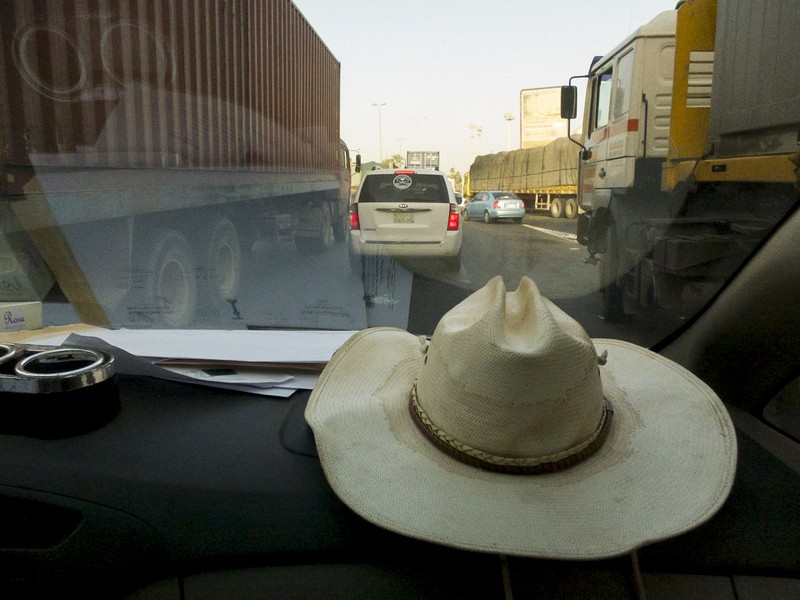

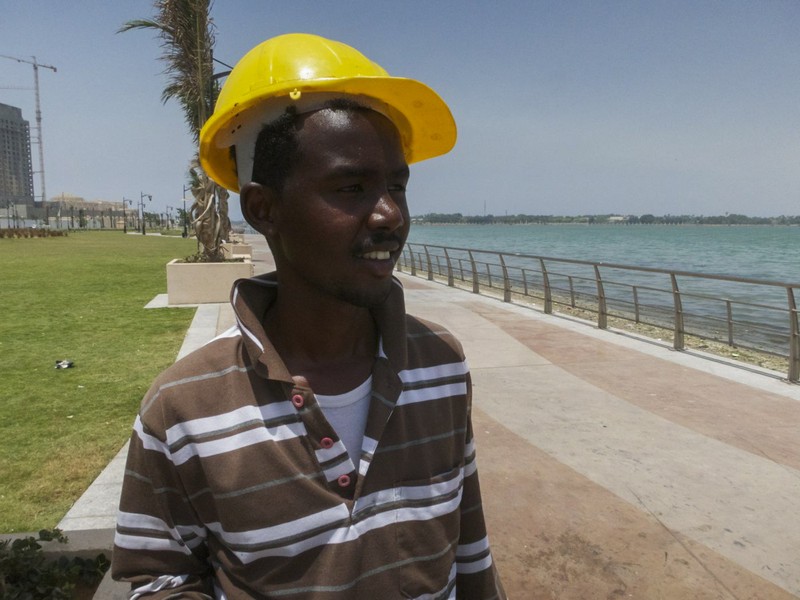
April 3 of 2016 the team of Out of Eden Walk embarked on a journey through Baku, Azerbaijan. Baku, Azerbaijan is the first oil capital of the world. Baku had been a traveling focal point for adventurers and wanderers leading all the way back to the Stone Age. Throughout history, this port offered fish and shelter for humans crossing through. During the 19th century the city had become the world’s first petroleum capital. Evidence of Baku’s history is littered throughout the city in their historical architecture still up to this day. In Old Baku especially, the beauty of the past is standing strong, remaining a staple in the city’s tourism. Despite the historical evidence throughout the city, the city still has it’s hints of modern urbanization and modern architecture that can be admired alongside the older beauties.
You can find more information and pictures about this adventure here.
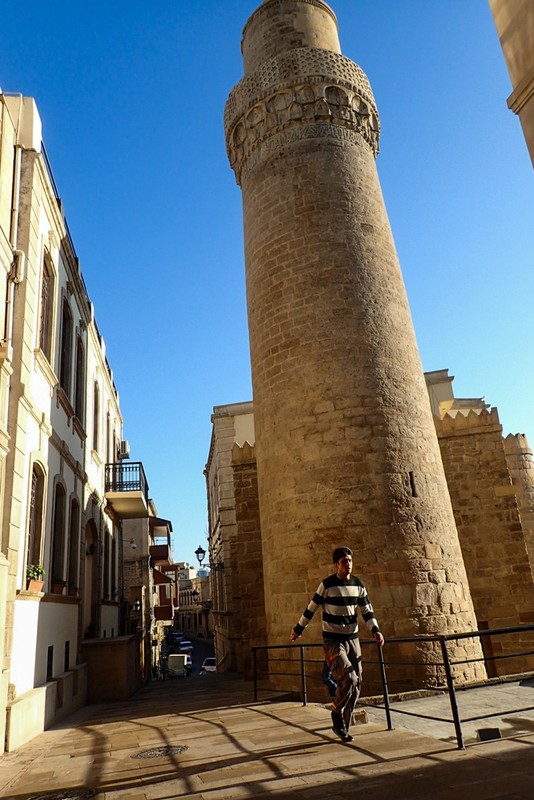

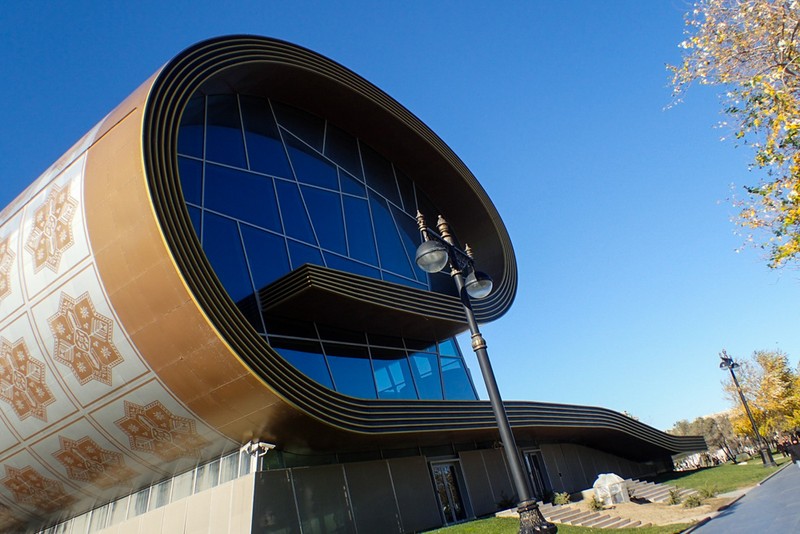
Another one of their adventures they had taken just this month on November 8, 2021 is that they traveled to Gaoligong Mountains in Yunnan, China. This was a stop of the adventure through the Middle Kingdom. The Gaoligong Mountains is considered China’s hotspot of biodiversity. This biodiverse land spans approximately 300 miles of land with about 5,000 species of plants that cover this vast landscape. Of course, this location is just as plentiful when it comes to the diversity of their wildlife. The Gaoligong Mountains have about 700 species of animals that call this beautiful landscape home. Amongst these species of animals include 154 mammals, 419 birds, 21 amphibians, 56 reptiles and 49 fish. Included in the animals that cover this land there are also approximately 1,690 different species of insects in this area. According to biologists at the Gaoligong National Nature Reserve, there are still so many different species of plants that are discovered every single year. Within the article, they also discuss just how much industrial farming, logging, overfishing, pollution and human-induced climate change is affecting areas such as this one all around the world.
You can find more information and pictures about this adventure here.
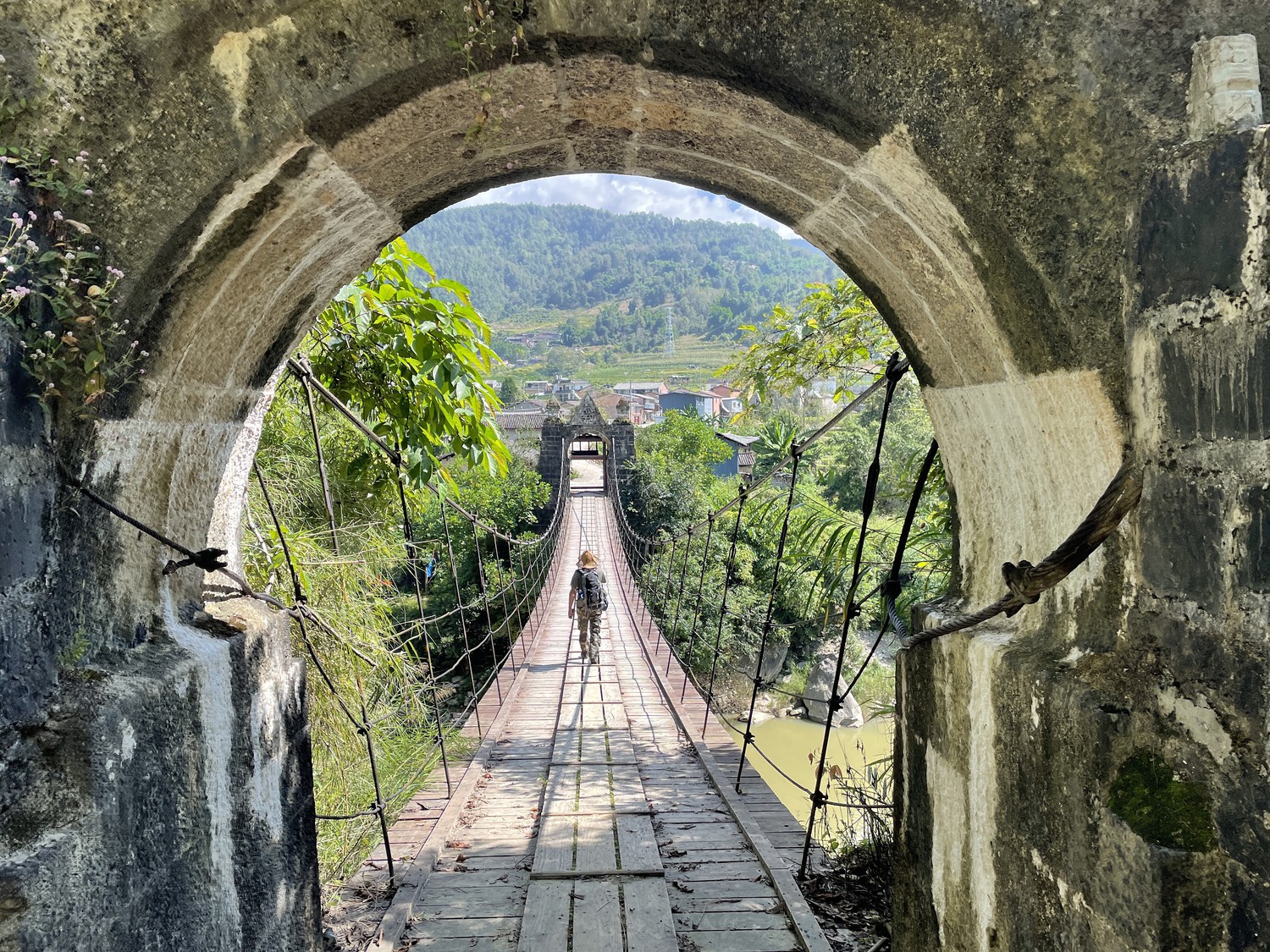
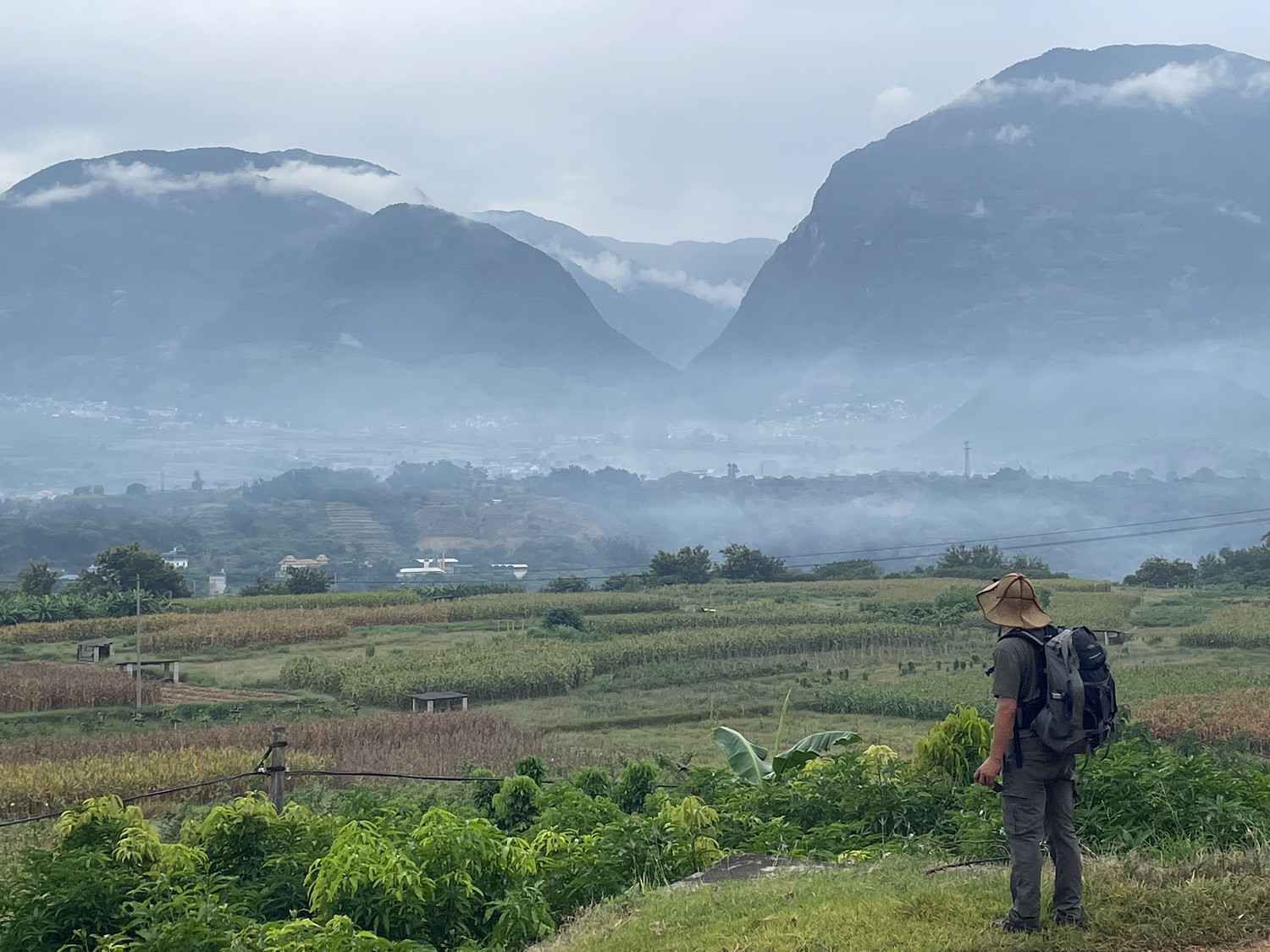
Out Of Eden Walk
Out of Eden walk is an experiment in slow journalism. Paul Salopek is partaking in this experiment. He is walking 24,000 miles by foot. Paul is walking pathways that the first humans that migrated from Africa took. He is doing this to write major stories on climate change, cultural survival, mass migration, and so much more. He is recording everything as he takes this journey to rediscover our world.
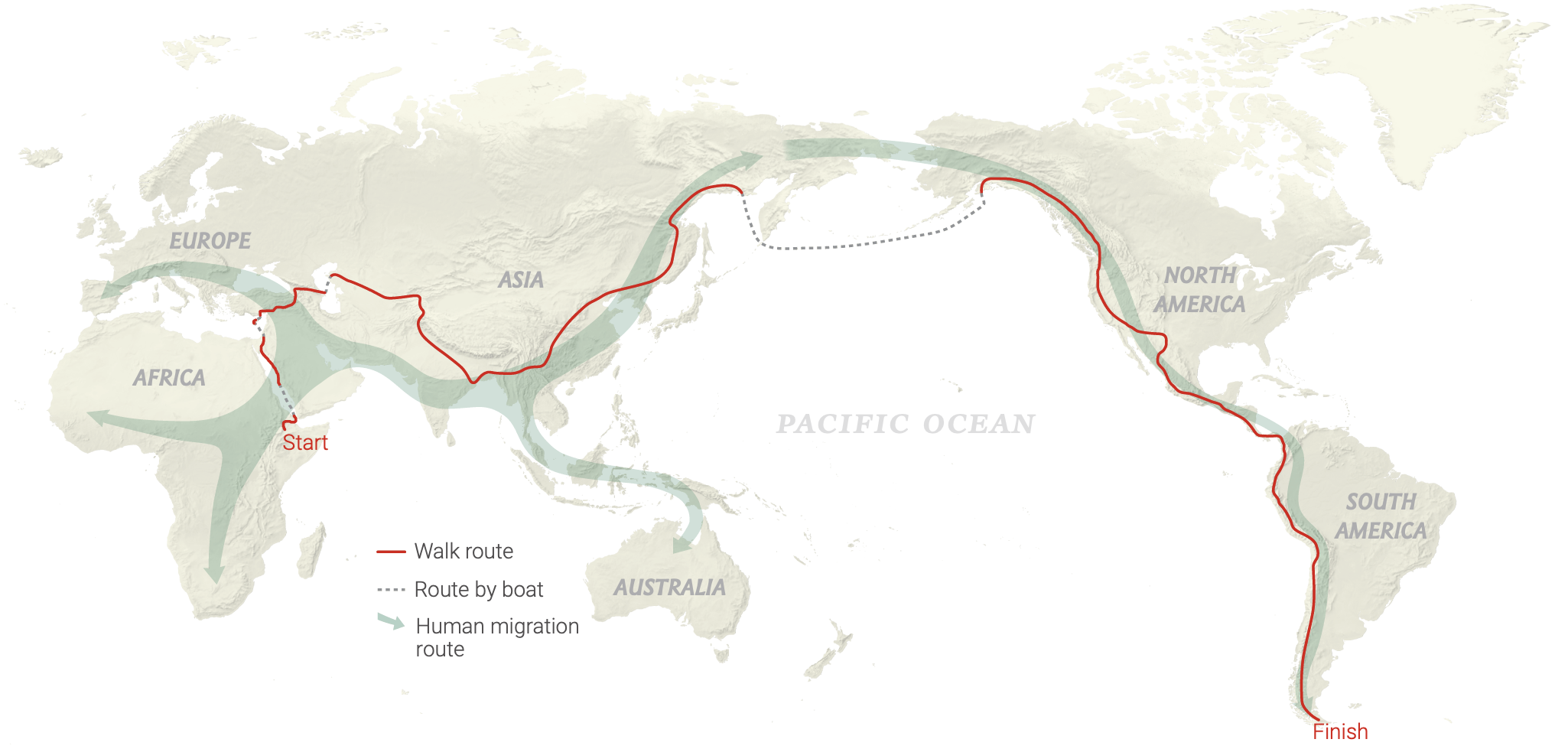
Out Of Africa
Out of Africa was the first stop I explored. I explored this one first because it is where the journey starts. Paul begins his journey with his tour guide Ahmed Alema Hessan. They begin their journey with camel walking. An interesting topic that stood out for me was the walk through the graveyard. Paul walks through a colossal graveyard. The people of Ethiopia live comfortably among their uncounted dead. I found this interesting because their bones are never buried and people are able to walk comfortably with them. Another thing I found interesting was the hand-dug wells. These wells were fairly deep and it’s quite impressive that someone hand-dug them.
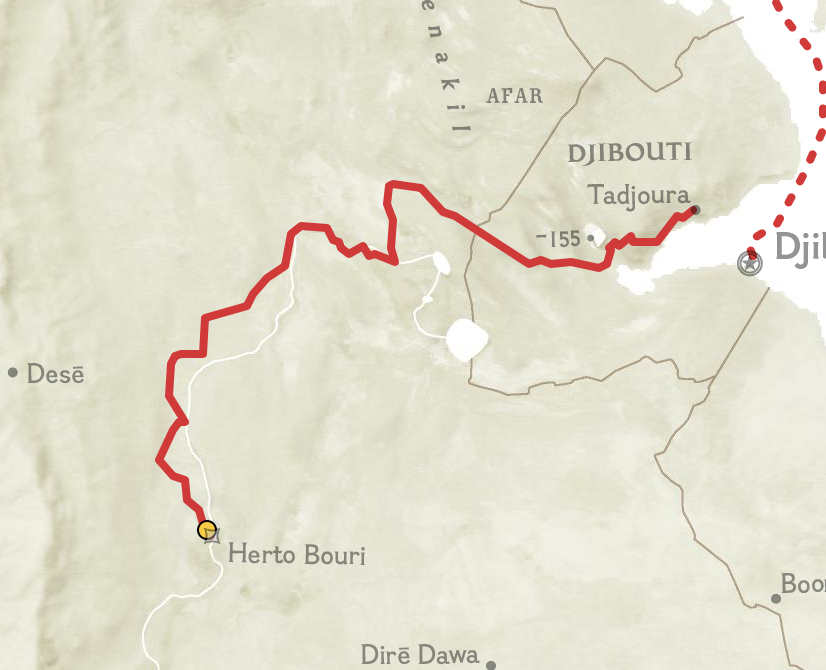
Autumn Wars
The next stop of Pauls journey I read about was chapter 3, Autumn wars. In this part of his journey, Paul writes about how lonely Europe is. He says that crossing the boarder there was not another soul on foot. In chapter 3, Paul has been walking for 532 days and has walked a total of 1,900 miles. Something that stood out for me in this chapter was the ghost city. This is where a green line separates northern and southern Cyprus. It represents the unsolved war in Europe. Paul says that it is a barbed-wire scar.

Silk Road
Chapter 4 marks milestone 33 on Pauls journey. He has been walking 1,079 days and has walked a total of 3,200 miles. Paul visits Aktau, Kazakhstan. This is a place where the streets have no name. In this chapter Paul explores places where mystic healing is used. He learns about tales of miracles and hope while he’s in central Asia. He walks through the wilderness with his horse. The horse is used to carry his stuff from destination to destination. He states that in Kazakhstan, horses are apart of the culture. They are used for many things. Chapter 4 was my favorite chapter I read. Paul explores many interesting things in this chapter. He also learns a lot about the different cultures.

Overall, I found this website very interesting. It would be a helpful tool to use in a geography classroom. The stories that Paul writes about the places he explores, are informational and interesting. His journey towards rediscovering our world is one that everyone should read about. You learn a lot about the different cultures. Check out the website to learn more about Pauls journey!
Out of Eden Walk
The first humans to explore the Earth made the long journey out of Africa during the Stone Age, and Paul Salopek is walking their same path. This photo maps out their 24,000 mile trek through all of the continents covering the globe.

There were many people who walked this path and Paul even quoted “Not an inch of this antique vista hasn’t been fought over, cursed, blessed, claimed for one divinity or another. It is a land worn smooth like a coin traded through countless fingers”. They thought of the desert land of the Arabian Peninsula as the holy lands which was the history for the three monotheistic faiths. So many people believed in this so it made it easy for them to all want to walk this journey. Still to this day since the Stone Age, the Out of Eden walk is still being talked about by trying to connect all of the diverse partners involved. The path crosses through the Silk Road in Central Asia which was one of the largest trading paths in history. This meant that it connected so many people because lots of people were located around the Silk road.
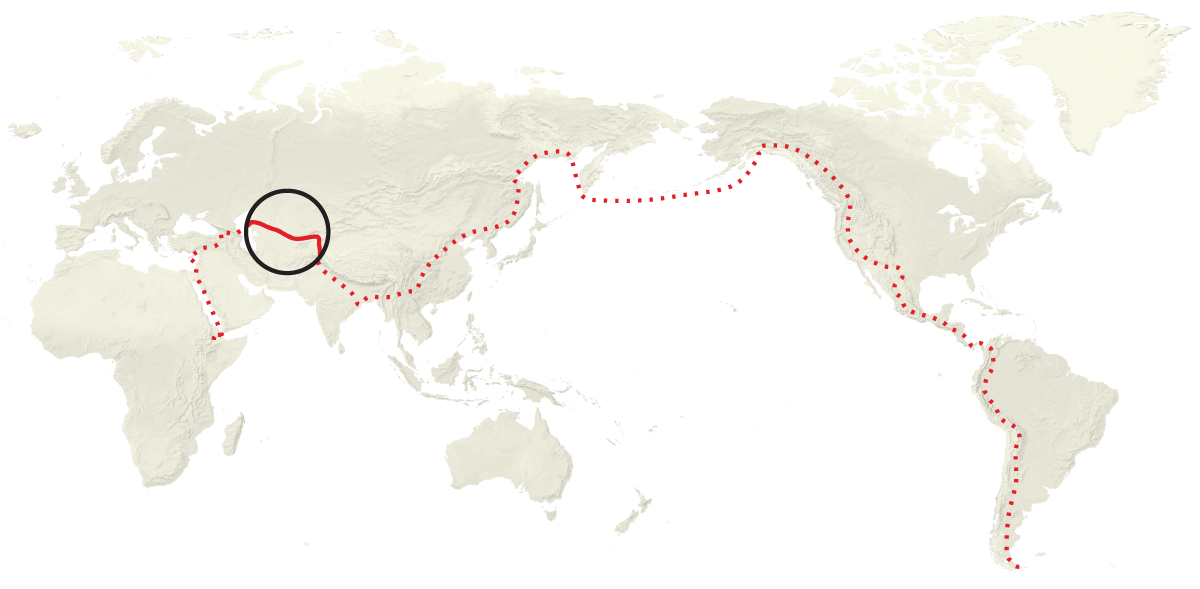
Overall, this project that Paul Salopek started is meant to connect the different, diverse continents. It shows the path that the first humans took during the Stone Age to connect the different bodies of land. To learn more about the Out of Eden walk, explore https://www.nationalgeographic.org/projects/out-of-eden-walk/#section-0.
Julie Barron
Recent Comments